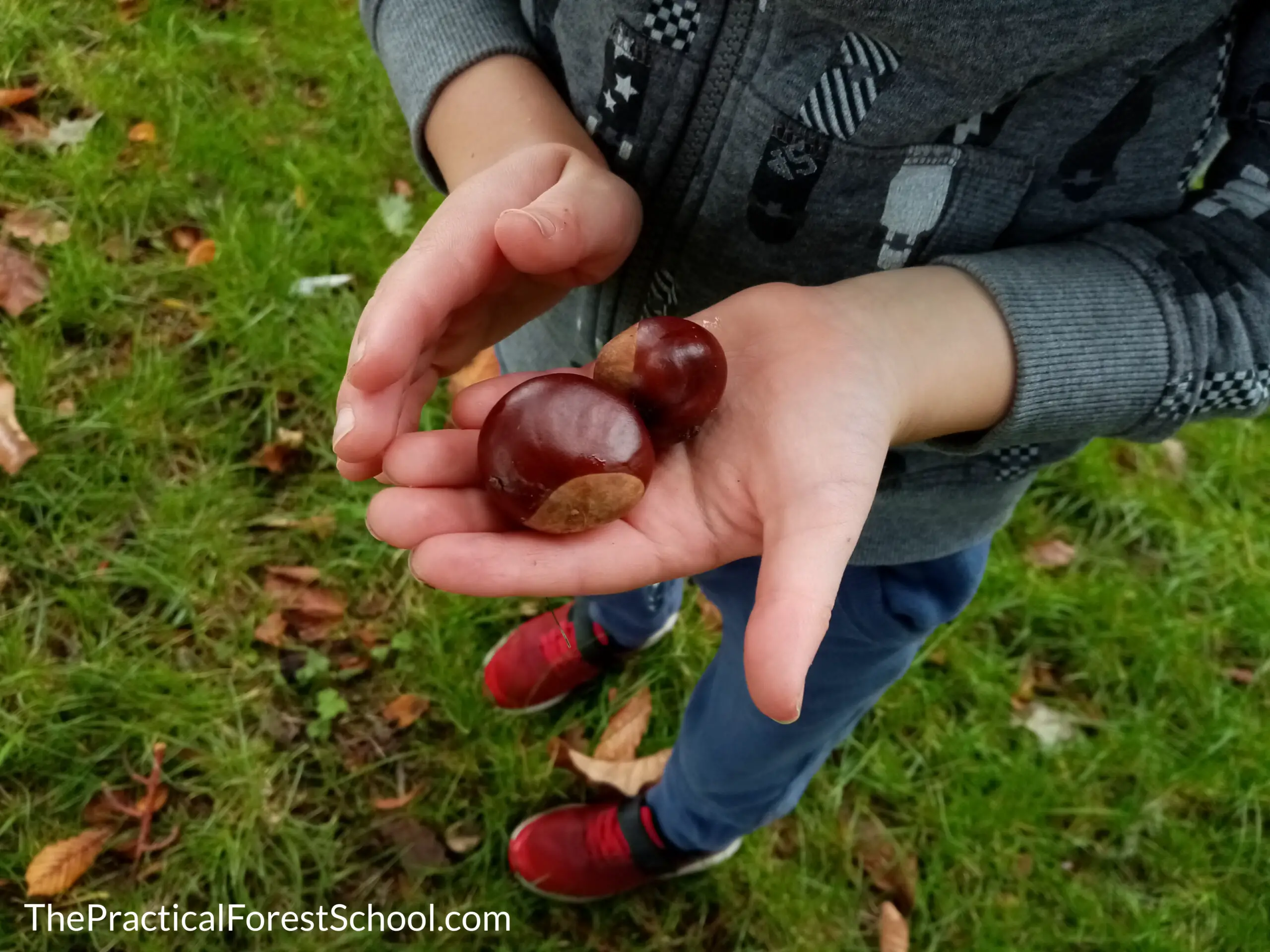15 Easy Autumn Forest School Activities
This blog is reader-supported. When you purchase something through an affiliate link on this site, we may earn some coffee money. Thanks! Learn more.
This article contains affiliate links at no cost to you. Read our earnings disclosure.
Are you looking for easy forest school activities for autumn! (Or fall, as our US readers would call it!). You’re in the right place.
We have a bunch of simple outdoor activities to share that take little time to set up, use resources you probably already have in your forest school area and that will inspire children to get creative and have fun outside!
1. Build a den
What’s not to love about den building? This is the perfect time of year for it. There are plenty of materials out and about for den building.
Plus it’s a good way to stay warm on colder days as it takes a lot of energy to lift and move large logs to create the structure!
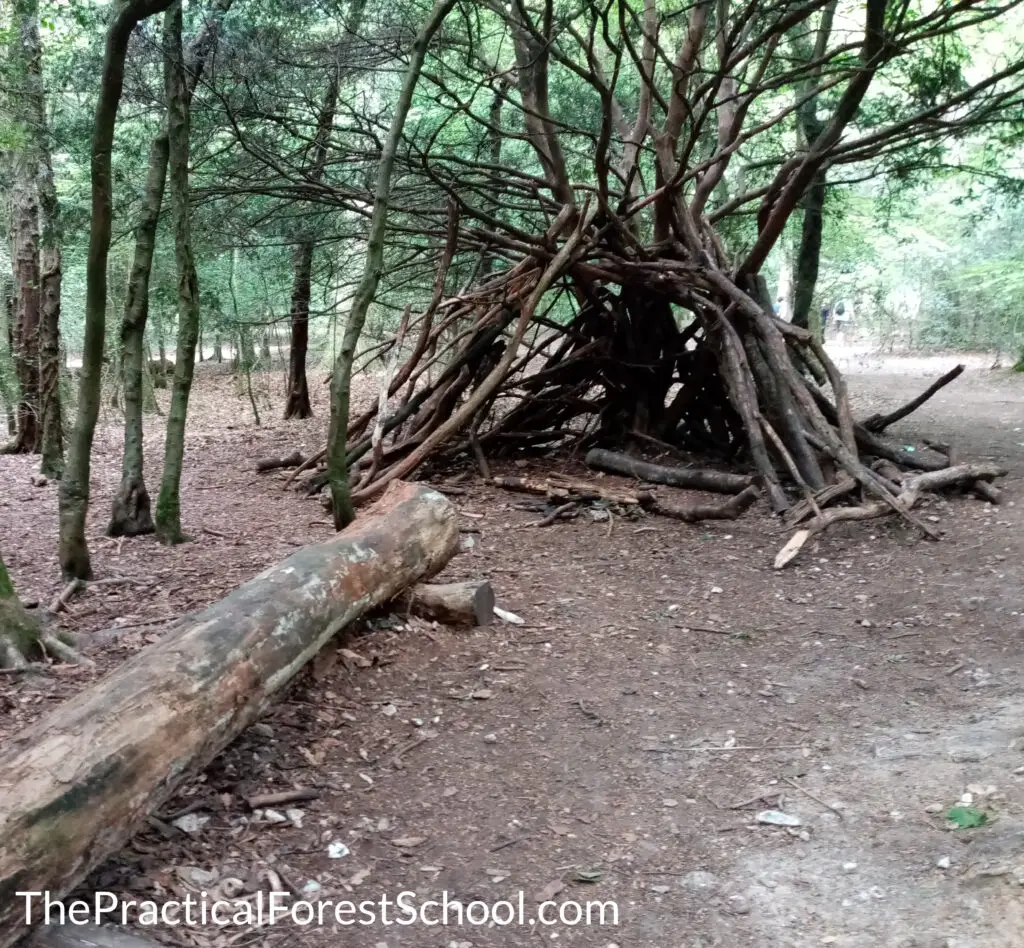
2. Make leaf crowns
If crafts are your thing, leaf crowns are a popular way to showcase the autumn colours. We don’t do this often as it requires taking paper and sticky tape (double-sided works best and is the easiest for small hands as you can put it on the crown for them so they just have to find and stick the leaves) out into the forest.
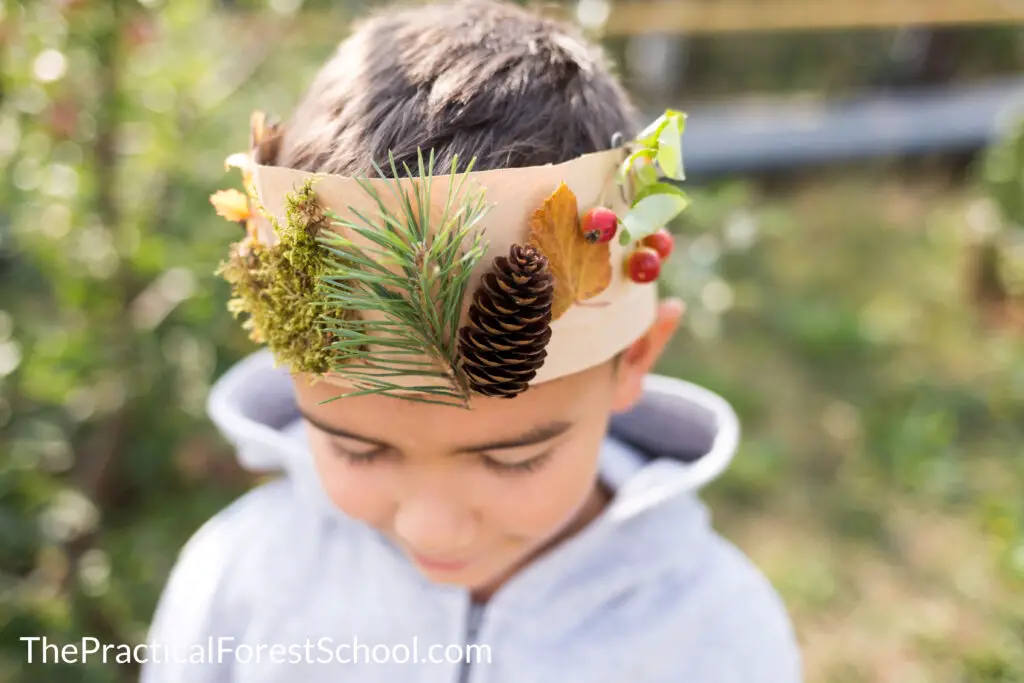
Be royalty for a day with a bespoke crown! With the lovely autumn leaves in golden colours, it’s a winner for many children.
3. Make a stick raft
One of our settings has water, and after the dry summer the kids are excited that it’s flowing at a height that makes stick rafts and water play an option.
The simplest things to drop in the water are sticks and leaves. But if you want to get fancy, see if the children are interested in looping sticks together to make a small raft. Will it float?
Watch a video of how to make a stick raft on the Scouts.org website.
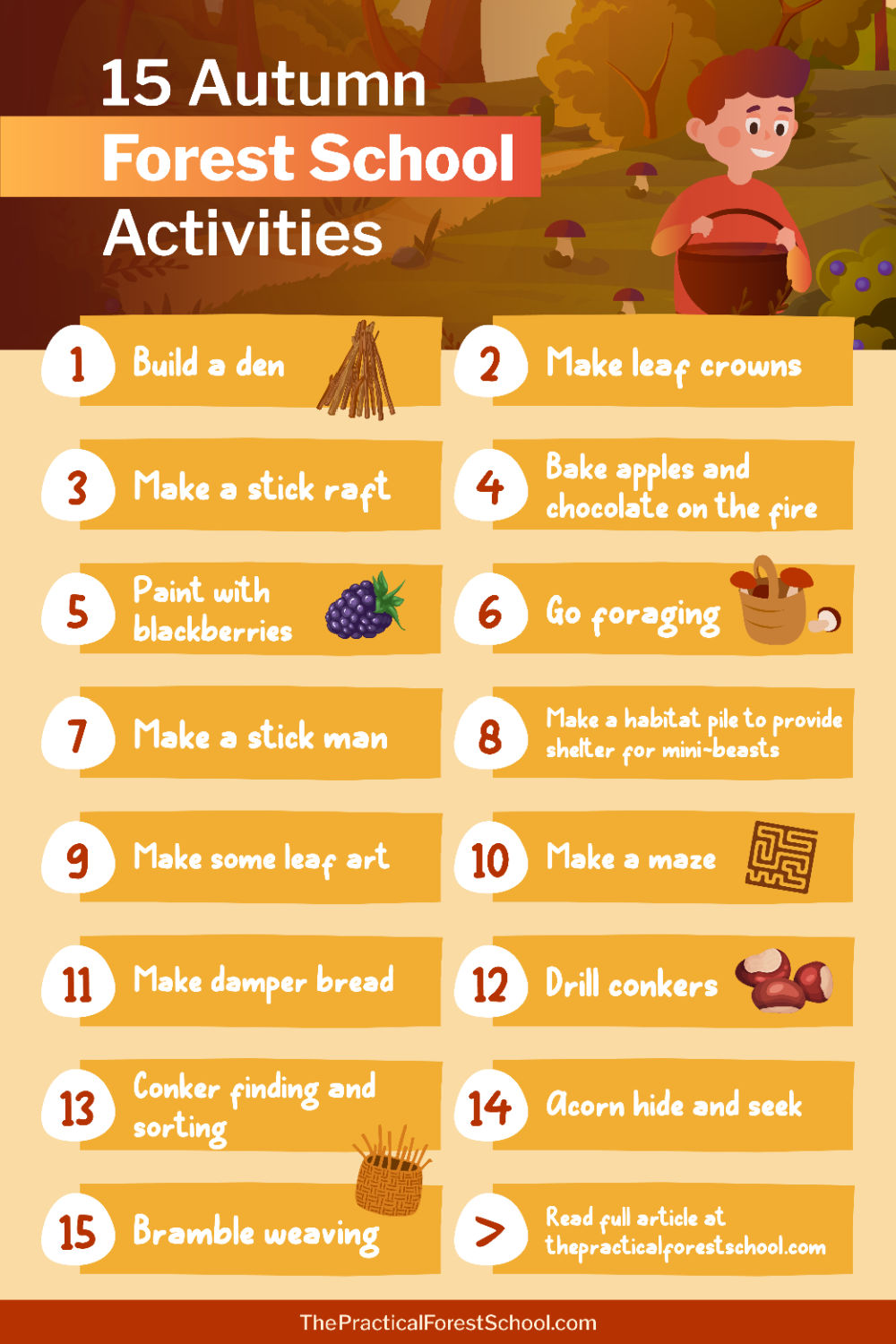
4. Bake apples and chocolate on the fire
Core an apple. Fill the space with chocolate (half a Mars bar works well). Wrap in tin foil. Then put the whole thing in the embers of the fire or on a trivet over the fire until the chocolate has melted.
In my experience, the apple will not go soft because baking an apple properly takes a long time… and forest school sessions are short! And children’s patience levels for eating chocolate are shorter!
The apple will be still be warm and tasty, and it might have started to soften depending on how long you’ve left it in for and the temperature of the fire.
A delicious, easy fireside snack that makes a change from hot chocolate and marshmallows.
5. Paint with blackberries
I know people have mixed feelings about using food for non-food purposes when there is so much food poverty in the country, but if it’s appropriate for your setting, painting with blackberries is an easy activity.
Make the paint by mashing up the blackberries. Add a bit of water if you like. You can paint on tree trunks, big leaves, log cookies, sheets (hang them up between trees) or simply paper.
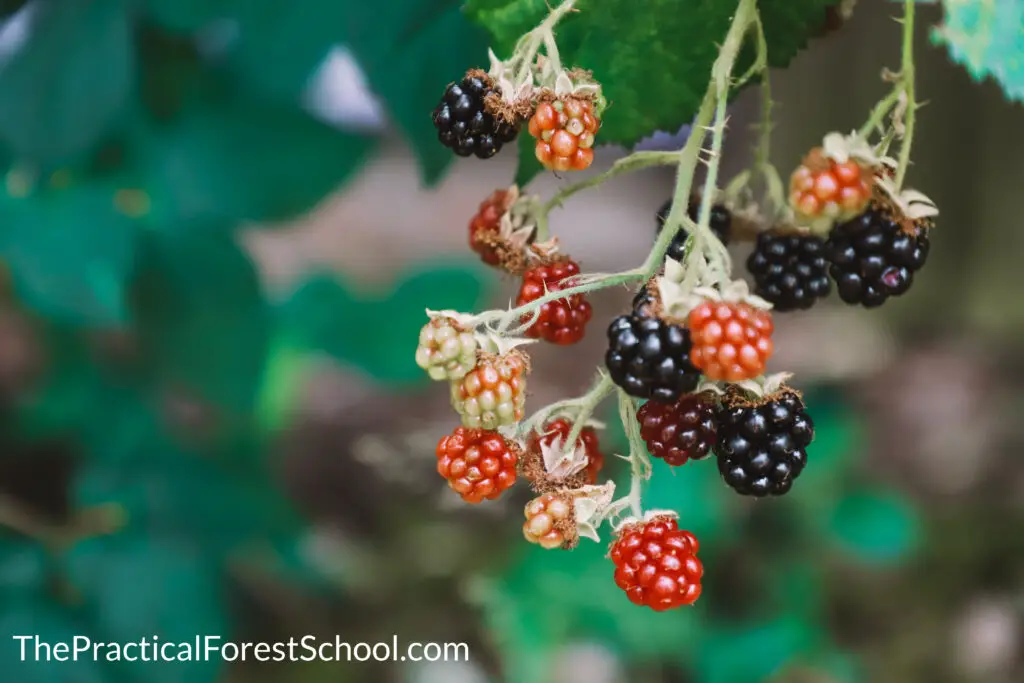
The children might like to find different things to paint with: leaves, feathers and moss all work well, but what else will they come up with?
6. Go foraging
If you are leading sessions with older children, it might be appropriate to go foraging. Look for edible plants in your setting. Blackberries are easy to find at this time of year but I often find round here they are tiny and full of little worms, so be very careful about this activity.
Nettles are another easy-to-find option and they make a decent tea!
Warning: Eating the wrong stuff can make you very ill. Only do this with children who can understand the difference between ‘good’ plants that are OK to eat and ‘not good’ plants that will make them sick.
As an adult, you might enjoy this book: How to Forage for Mushrooms Without Dying. It’s a good read!
7. Make a stick man
Arrange sticks on the ground to make a giant stick man figure and his family.
There are plenty of sticks around at this time of year which makes stick-based activities easy to do and we find children naturally gravitate to picking up sticks anyway!
If you regularly include story time as part of your forest school sessions, then Julia Donaldson’s Stick Man is the obvious choice.
8. Make a habitat pile to provide shelter for mini-beasts
This is another fall forest school activity that is easy to integrate into the curriculum if you need to. Any topic on mini-beasts or habitats can link into creating a place for those creatures to live.
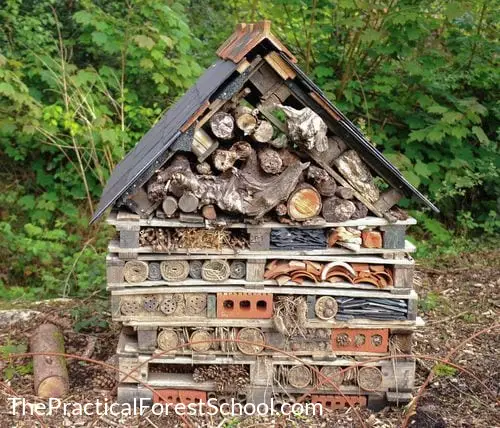
Use some of those sticks to make a shelter for mini-beasts. Many smaller creatures and insects will be grateful for that stick pile, and you can check back in on it in another session to see what creatures have moved in.
9. Make some leaf art
A list of autumn forest school activities wouldn’t be complete without some leaf art. Use fallen leaves to arrange on the ground to make words or pictures. Sticks make a frame. Make an art gallery to show parents and teachers.
Alternatively, make leaf portraits. Can children make a picture of themselves?
10. Make a maze
Gather up sticks or fallen leaves and use them to mark out a trail or maze on the ground.
The adults can make the maze for the children to follow, or older children might like to have a go at making a trail or maze of their own, for a friend to try.
11. Make damper bread
I have mixed feelings about damper bread. It’s not tasty, but it is edible. Jam makes it better, in my opinion!
Children seem to love making the dough and as the afternoons get chillier, there’s even more reason to draw around the fire circle.
Here’s our favourite campfire bread on a stick recipe.
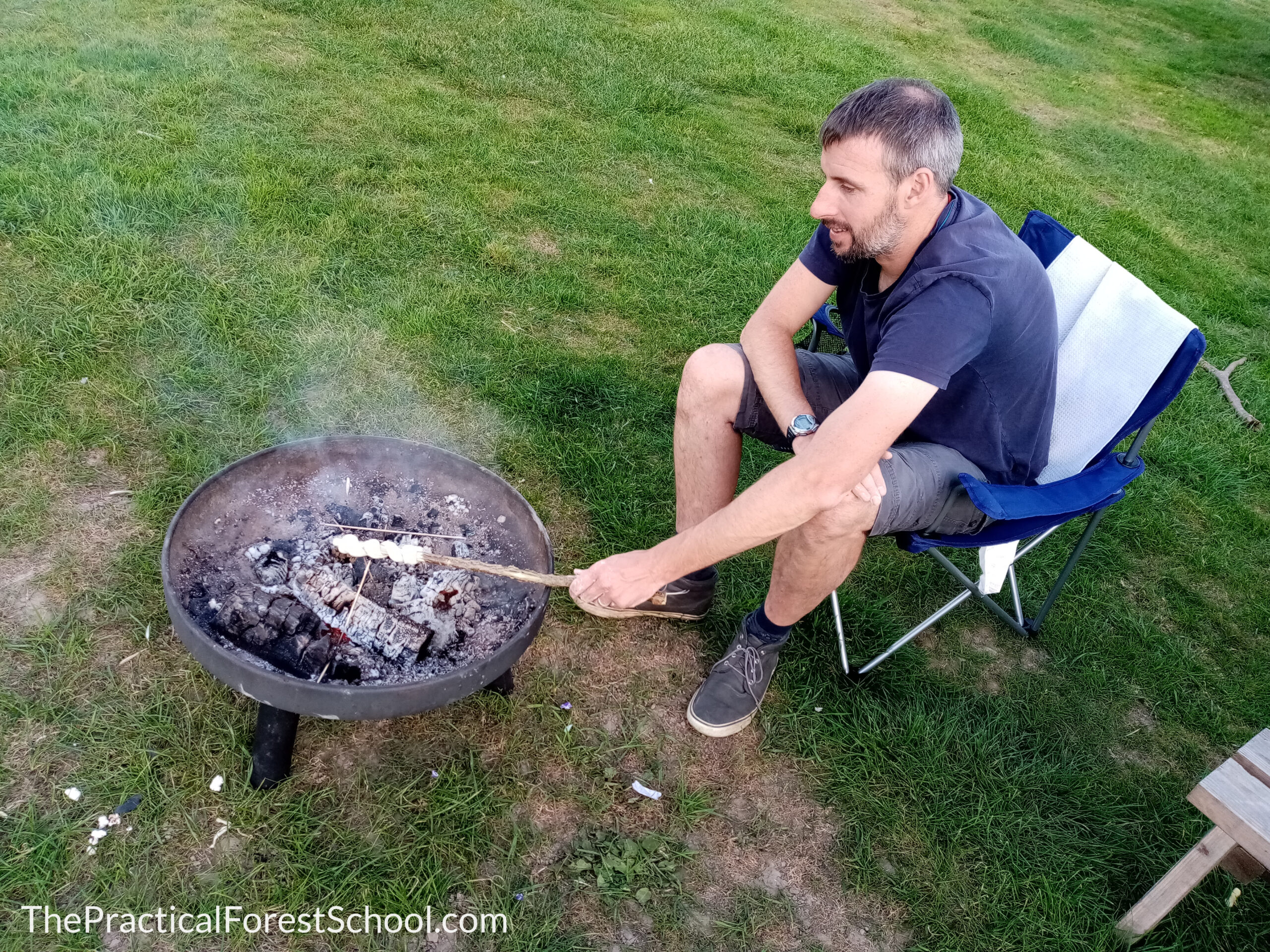
12. Drill conkers
Get the hand drills out and start making holes in conkers!
For me, the fun is in the drilling and using tools. But for many children, the fun part comes next: stringing up the conkers so they can be used for games!
Tip: Many schools discourage the old-fashioned conker bashing game now, and for health and safety reasons it would be best to do that with safety goggles – even if that isn’t that look we had when we were kids in the 80’s.
If you think drilling conkers might end up in conker bashing, then do your risk assessment and make sure the activities are carried out safely.
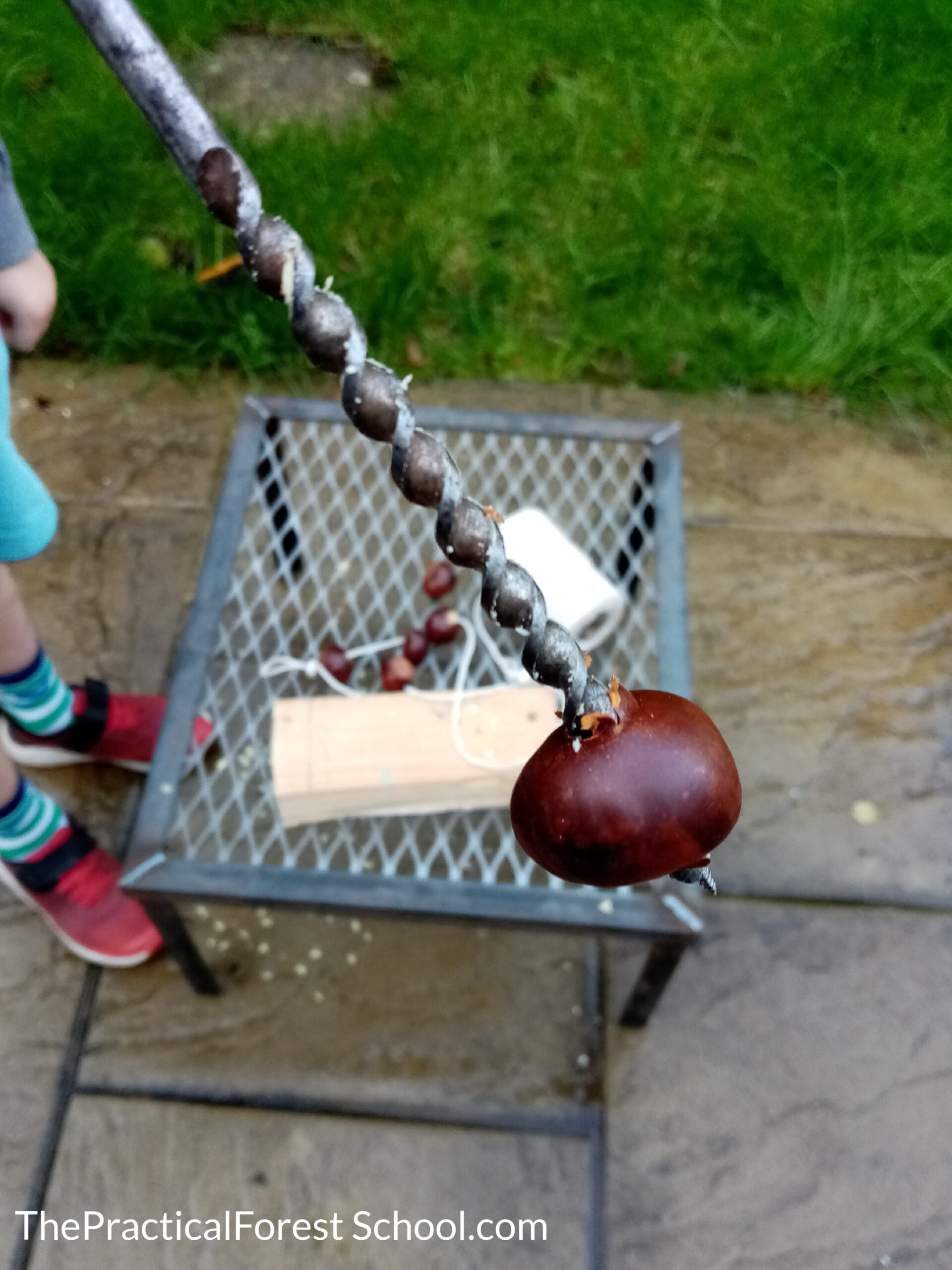
13. Conker finding and sorting
If tool use isn’t an option for whatever reason, younger children will enjoy hunting for conkers and then sorting them into piles or arranging them into patterns.
Make a long line, or put them into piles of 10. There are so many ways that conkers can be used to support curriculum-based learning if you are allied to a school.
14. Acorn hide and seek
In their book, Play the Forest School Way, Peter Houghton and Jane Worroll introduce the game of acorn hide and seek.
Basically, children hide a handful of acorns each. Then you do another activity just to break up their memory pattern. Then they have to go and find their acorns again.
This is a good game to play to tie into the curriculum about hibernation, squirrels, habitats, the food chain… the list goes on.
15. Bramble weaving
Bramble weaving takes a bit of effort but it’s something to think about with slightly older children. And it gets messy if you take it to the next level, adding mud to the woven structures!
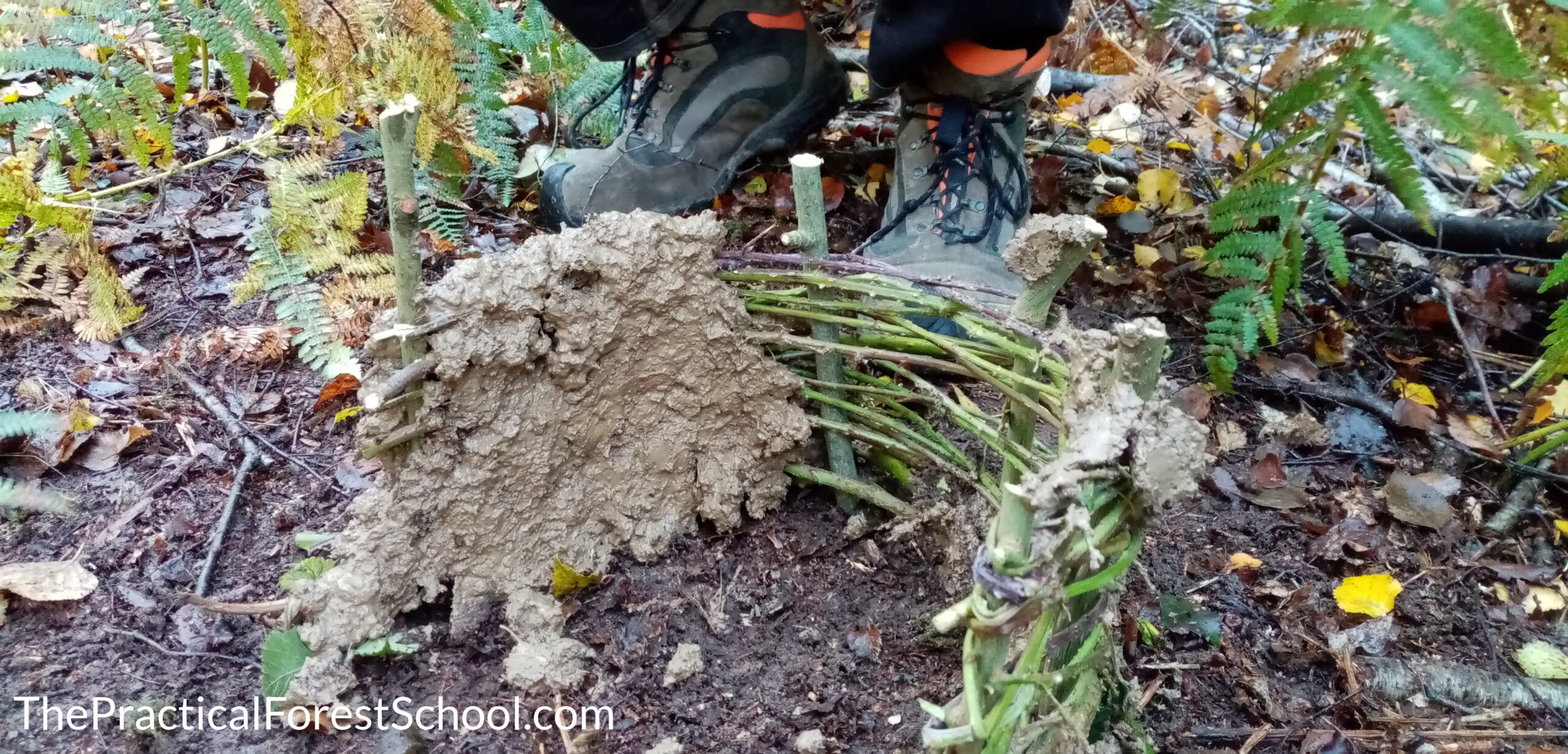
Which one of these will you try first with your forest school group?
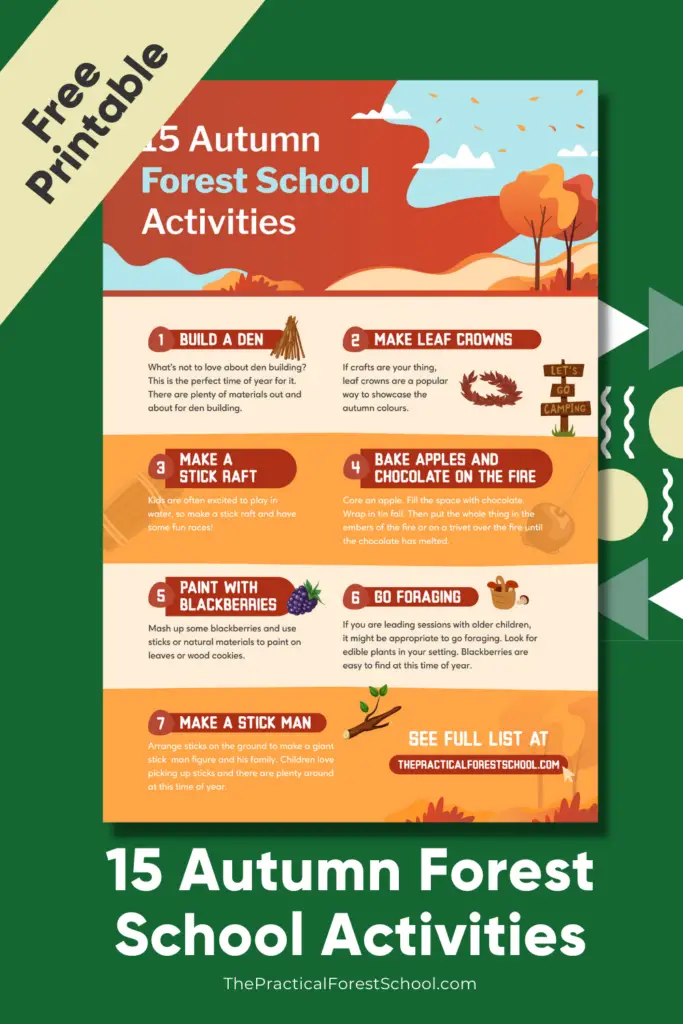

About the author: Jon Borley
Jon qualified as a Level 3 Forest School Leader with the Sussex Wildlife Trust. He works independently as a practitioner running forest school clubs and also within schools both in a forest school capacity and as an outdoor learning teaching assistant, working with preschoolers to secondary-aged children. He has previously led sessions for adults as part of professional development events for the Sussex FSA, and is a member of MIAS.
